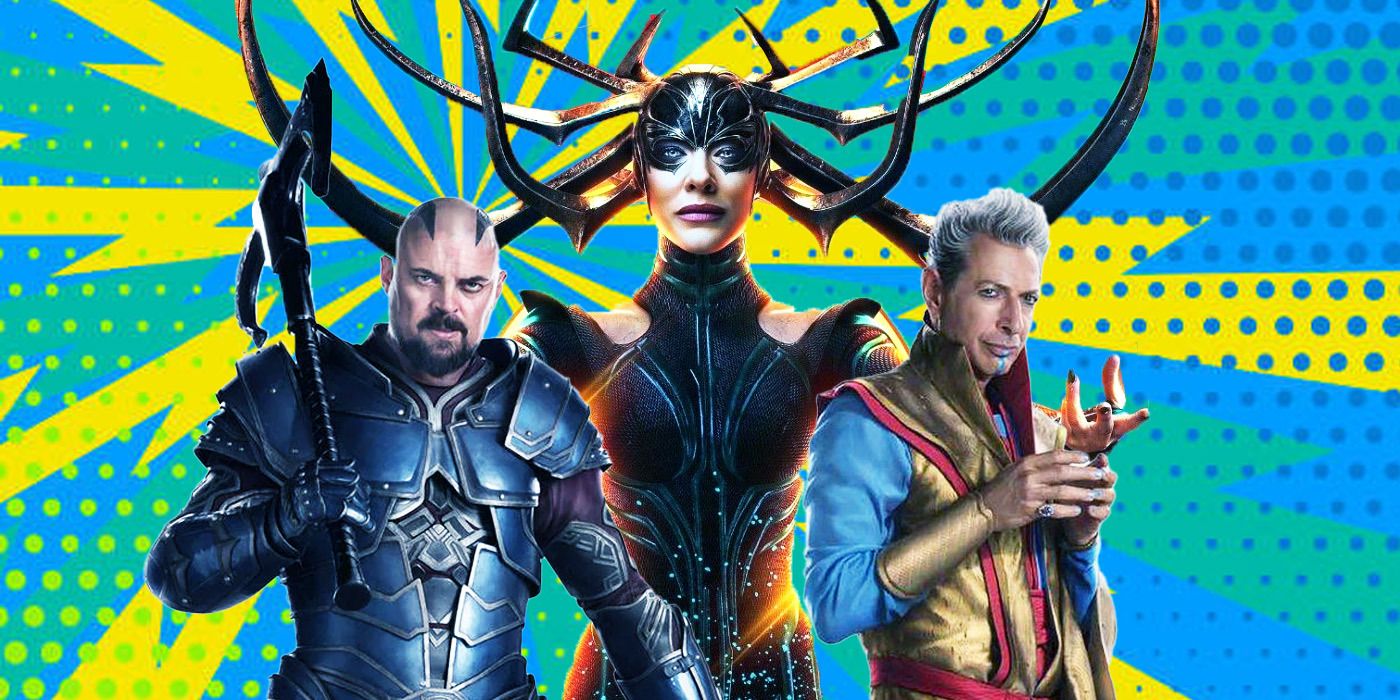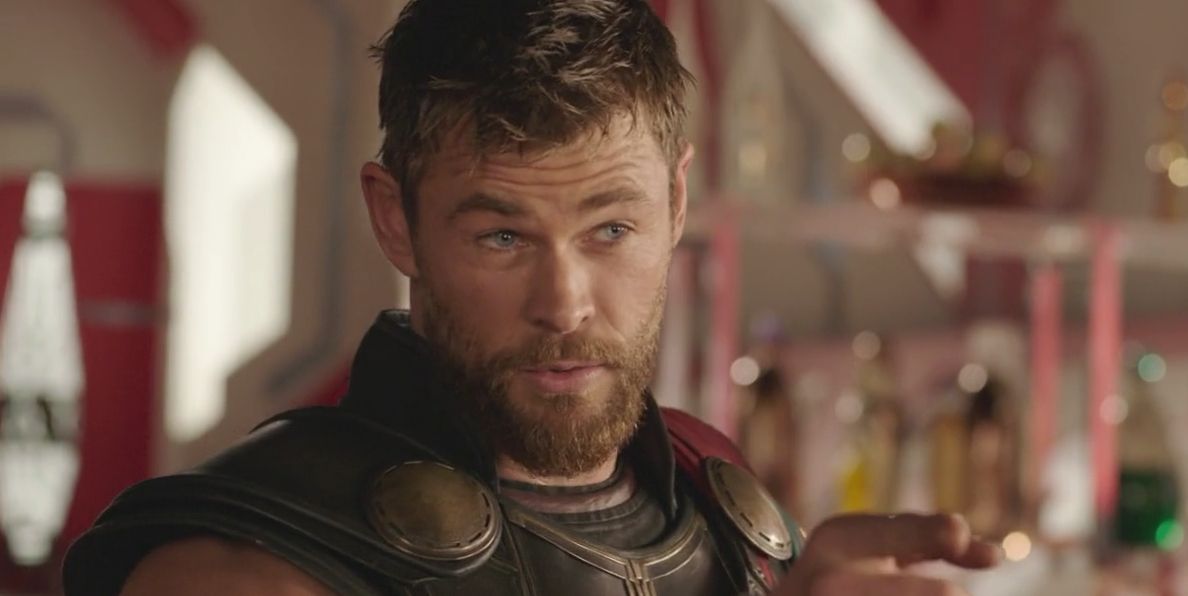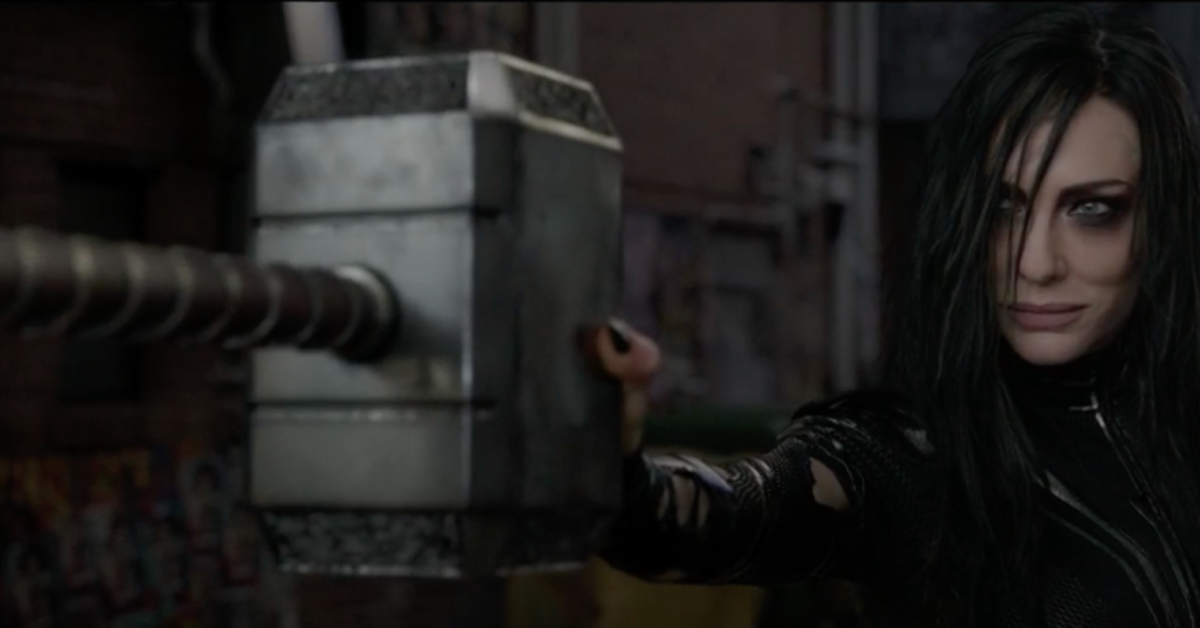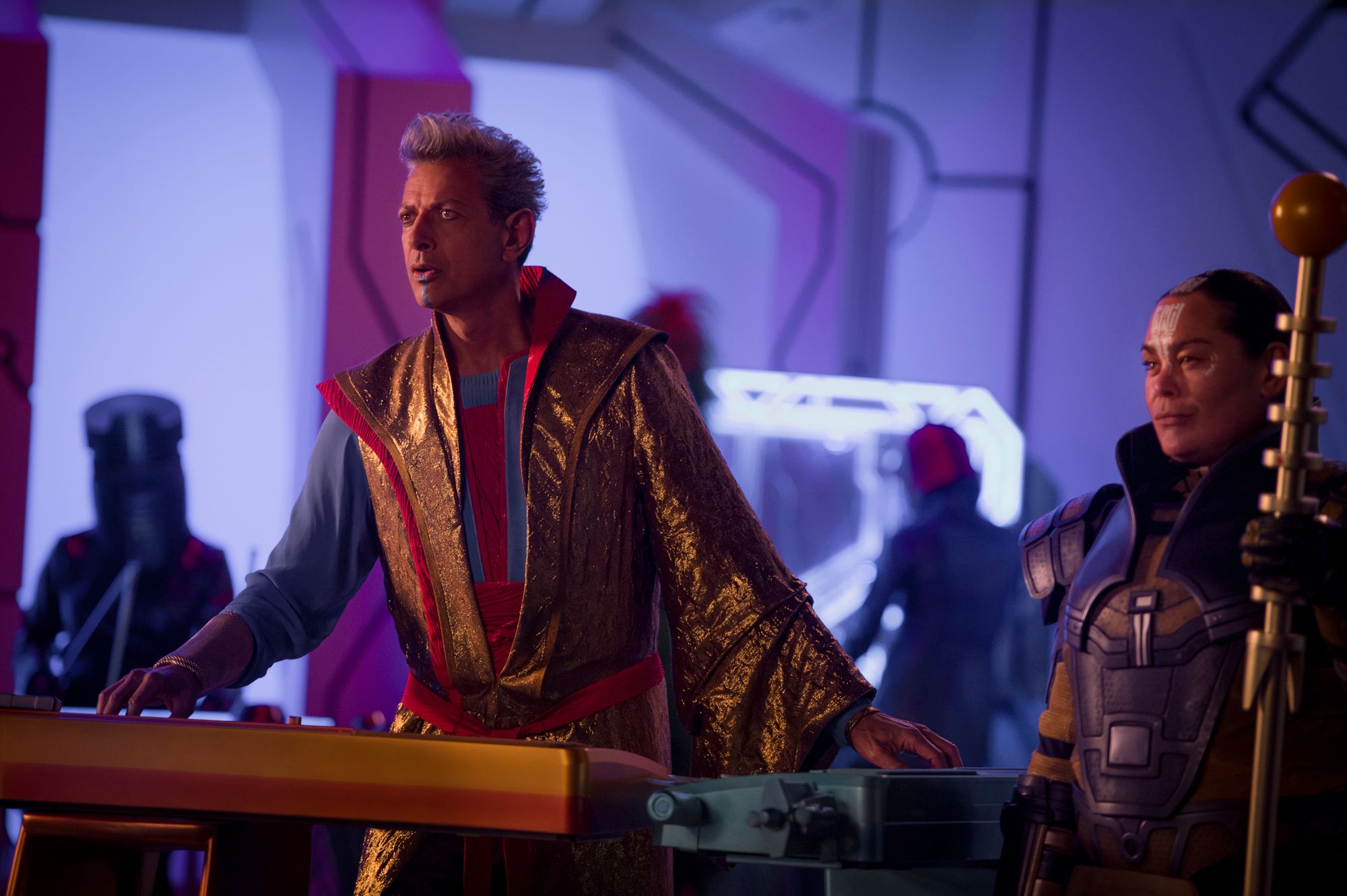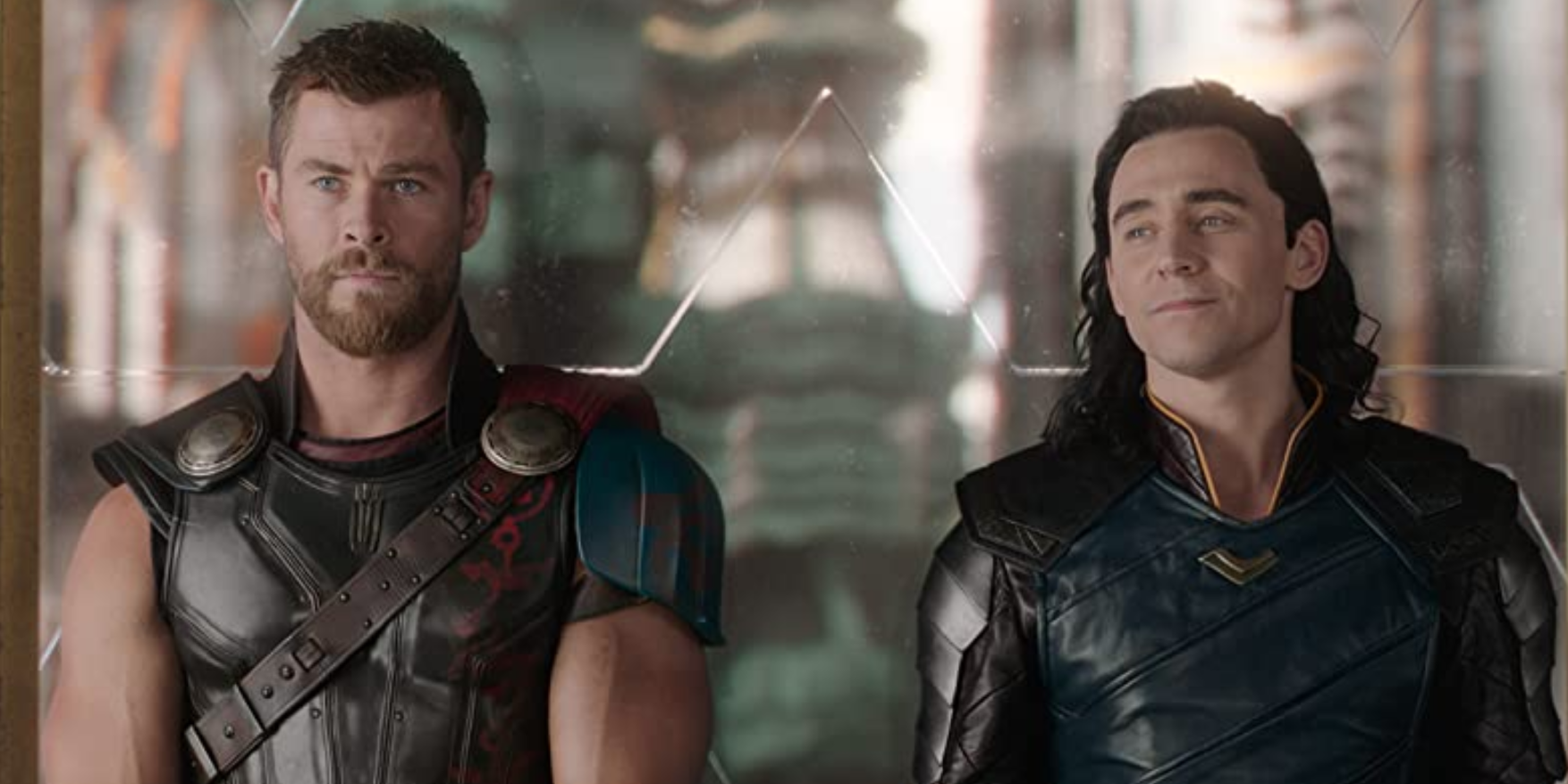When you think about Thor: Ragnarok, the first things that come to mind are probably Chris Hemsworth’s refreshing take on the title character, Taika Waititi’s bombastic vision, or the film’s tonal shift away from Thor’s first two more melodramatic outings. A thought that probably never enters the mind is that the film has too many villains. With its sprawling roster of antagonists, though, Ragnarok could have easily fallen victim to the “too many villains” criticism that plagues so many superhero films, especially super-sequels. But even with Loki (Tom Hiddleston), Hela (Cate Blanchett), Skurge (Karl Urban), the Grandmaster (Jeff Goldblum), Topaz (Rachel House), and Surtur (Clancy Brown) all featured, the film never feels overstuffed with antagonists. By giving each villain purposeful motivation and by allowing them narrative distance from each other within the film, Thor: Ragnarok demonstrates how a superhero film can feature numerous villains without ever feeling like there are “too many.”
Ragnarok primarily accomplishes this feat by imbuing each villainous character with motivation that is not solely dependent on Thor’s presence. Like all villains, overcoming the hero is certainly part of their narrative purpose, but defeating Thor is an obstacle to their goals rather than the goal itself.
Hela wants to take the Asgardian throne and expand the kingdom’s empire. Skurge, who becomes Hela’s executioner, is motivated to serve Hela after witnessing her quickly kill two members of the Warriors Three. The Grandmaster wants the Hulk to continue winning his gladiator-inspired Content of Champions, and Topaz, his enforcer, wishes to help him carry out his violent delights. The fire demon Surtur wants to fulfill the prophecy of Ragnarök that sees the complete destruction of Asgard (to do this requires him to unite his crown with the Eternal Flame, so his primary objective is really to put his hat in a bowl of fire). Loki is Loki, so his mischievous motivation changes from scene to scene, always adapting to his own self-interests at the current moment. Each villain’s arc intersects with Thor’s journey, but each retains its own trajectory, and theoretically, could exist whether Thor was in the film or not.
Crucially, no single villainous objective boils down to “I have to defeat Thor.” This provides the villains two allowances. First, not being motivationally tied to Thor allows the antagonists to exist outside a classic good versus evil binary. For example, Skurge begins the film as a relatively harmless Asgardian and only turns to serving Hela after witnessing her murderous power. His motivation is thus survival-based and is more complex than simply being a “bad guy.” This also makes it far more plausible when Loki, in typical Loki fashion, changes sides multiple times during the movie. Second, in a film that represents just one story in a much grander universe, placing each antagonist on their own course allows for future growth and development in other MCU stories. Not tying them to exclusively defeating Thor makes it even more logical that those antagonists who survive this story could return in future Marvel tales.
Additionally, giving each antagonist their own arc allows the film to create narrative distance between them, which allows them to each make more of an impact. At no point does it feel like the film is force-fitting all these villains together for the sheer impact value of seeing them all together on screen at one time. Much of Hela and Skurge’s storyline takes place on Asgard without the other villains being present at all (or even Thor, for that matter). The Grandmaster and Topaz are exclusively present in scenes on their home planet of Sakaar, with almost no overlap with the other antagonists. The two Sakaar-based characters even get to interact in a scene where no other characters appear, which speaks to their individual significance in the narrative. Surtur appears only as a cinematic bookend that opens and closes the events of the film. Loki, of course, is the exception here, but Loki is characterized by his ever-shifting allegiances, so it seems only logical he is not constructed with the same distance. Providing narrative distance between the characters allows them to exist on their own terms and helps to stave off any feelings of over-crowdedness in any given scene. Allowing the various villains room to breathe helps them each leave their own lasting impression.
The film supports the characters’ distance by allowing scenes to unfold from villainous perspectives. Though the camera is predominately figured as an objective presence, several scenes employ point of view shots to present information to the viewer. When Hela throws her magical knives into the Asgardian palace’s ceiling mural, she is framed in an overhead shot. The film then cuts to a low angle shot looking up at the mural when the knives destroy it. Cutting back and forth between Hela and what she sees indicates this scene is taking place from her point of view. Hela’s antagonistic perspective is thus given as much narrative worth as the heroic characters who get point of view shots.
Not forcing all the villains into a final climactic battle at the end of the film also helps avoid any sense of enemy overload. The Grandmaster and Topaz are fittingly absent from the final action scene. Once Thor and company leave Sakaar, those antagonists are left behind with the planet. Surtur also only appears in the last minutes of the battle when Thor realizes only the fulfilling of the Ragnarök prophecy can defeat Hela. The other villains present in the final battle are thus each given their space to complete their narrative arcs without either distracting from one another’s or repeating similar conclusions. The selective inclusion of certain villains in the climactic battle also helps to avoid the feeling that all the villains were only included in the film to get to this final point.
Characterizing each antagonist with purposeful motivation and allowing them narrative distance from one another clearly allows Thor: Ragnarok to be a model for featuring a large number of villains in a superhero film. This is especially significant when considering that most superhero movies criticized for featuring too many villains are often third entries in a given series, like Ragnarok is. Trilogy-cappers from Spider-Man 3 to The Dark Knight Rises are notoriously criticized for cramming too many rogues into one film. Even other entries in the MCU, the golden benchmark for bringing comics to the screen, sometimes falls victim to the “too many villains” pitfall. (How many of the Extremis villains can you name from Iron Man 3?) And yet, as Ragnarok demonstrates, there is no such thing as “too many villains” if they are properly woven into the story.
Check out more mighty stories about ‘Thor: Love and Thunder’:
'Thor 4': Release Date, Cast, MCU Connections & Everything We Know So Far About 'Love and Thunder'
Chris Hemsworth and Taika Waititi Reveal ‘Thor: Love and Thunder’s 4-Hour Cut Was "Batsh*t Crazy"

